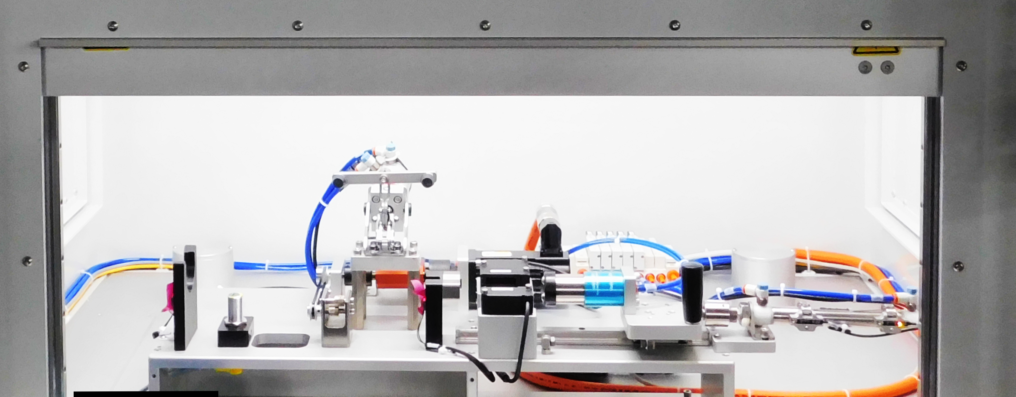How Invotec designed an automated end-of-line tester that helped one medical device manufacturer scale-up production while protecting IP
The Challenge
A large manufacturer of pathology solutions faced increased demands for their tissue-sampling probes. They forecasted volumes rising nearly 400% over the next five years—and they needed an additional, automated end-of-line tester to meet those goals. The company also wanted to add RFID tagging to protect their intellectual property as their products began to be sold internationally.
The Solution
Having designed and built a previous test system for this customer, Invotec looked for ways to enhance the original design to address the needs for improved cycle time and added security features.
We began by researching techniques for reading and writing to the RFID tags in a secure manner. Our controls engineers conducted feasibility and found that the sensor placement was critical in order to read/write without touching the handle of the device. This information was used to influence the design of the overall system.
The final solution works like this:
- An operator loads the device onto the system with the probe cutter open and seal applied; thrubeam fiber optic sensors verify that the product is seated properly in the nest.
- The probe assembly is vacuum leak tested (pressure decay) while a laser micrometer verifies that a precise product feature does not exceed the specified acceptable range. Once these measures are in place, the system uses a pneumatic clamp to secure the device while an integrated drive system performs a torque test on the device actuation wheel.
- If all three tests are passed, the device is laser marked with a serial number. The same serial number is written to the RFID tag along with the test results. If the product failed, the RFID tag is locked.
The Result
The automated end-of-line tester allows the tests to run simultaneously before writing to the RFID chip, helping decrease the overall cycle time despite the added features. The resulting system improved cycle time by 33% from the original tester—and has allowed the manufacturer to more than double production.
Think this combination of functional testing and RFID technology makes sense for your organization? Contact us today!
Share this Post

